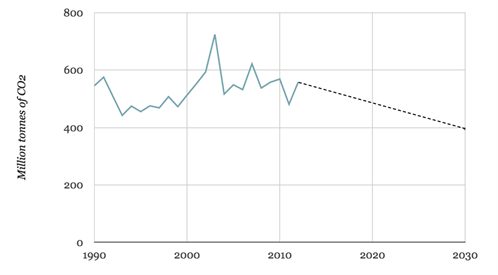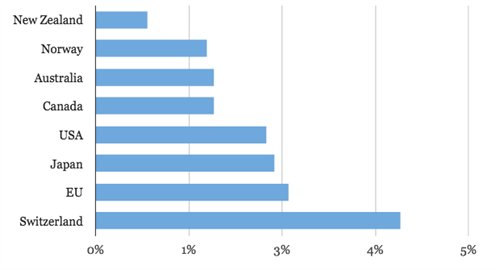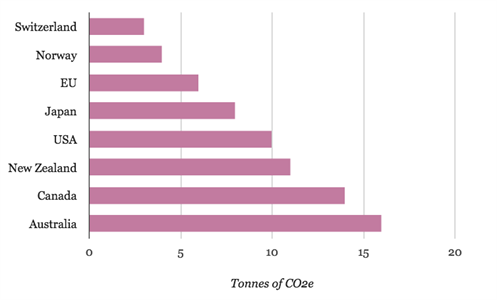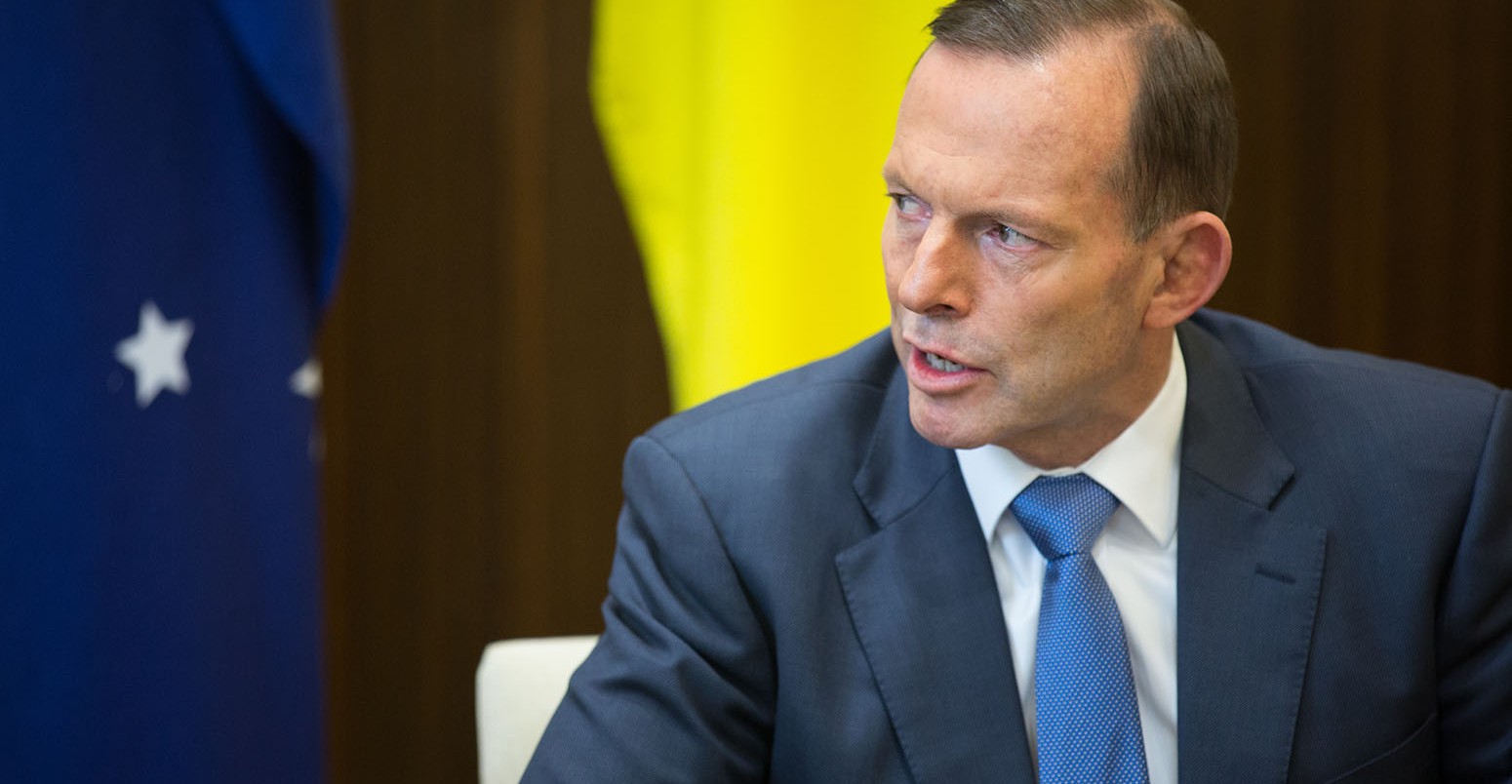Australia disappoints with weak UN climate pledge
Sophie Yeo
08.11.15Australia has pledged to reduce its emissions by 26-28% by 2030 based on 2005 levels – the latest in a line of countries to formally submit its contribution to a UN climate deal expected later this year.
The target has been criticised by analysts, politicians and campaigners as too low, putting Australia behind the other countries that have already outlined their future climate targets.
Prime Minister Tony Abbott disagreed. He said:
“It’s better than Japan. It’s almost the same as New Zealand. It’s a whisker below Canada. It’s a little below Europe. It’s about the same as the United States. It’s vastly better than Korea. Of course, it is unimaginably better than China.”
The pledge
Australia has made its pledge relative to a 2005 baseline, and covers all sectors of the economy, including land use emissions.
In its contribution, known in UN jargon as an “intended nationally determined contribution”, or INDC, Australia says that it will implement the upper range of its target (28%) “should circumstances allow”.
It also stresses that it “reserves the right to adjust our target” ahead of its finalisation under the global agreement expected to be signed at the end of this year.
Assuming that Australia does meet the 28% end of the target, this is what Australia’s emissions trajectory will look like up to 2030.

Historic emissions in green, trajectory up to 2030 in black dotted line. This shows a 28% reduction based on UN data; the data provided by Australia varies slightly, stating that emissions will be reduced to 441-453 MtCO2e in 2030, compared to 612 MtCO2e in 2005. Source: UNFCCC data and Australia’s INDC. Chart by Carbon Brief
Each country has to say why its pledge is a fair contribution to global efforts to tackle climate change and keep temperature rise below 2C.
In its INDC, Australia says that its target is fair based on the following factors:
-
It is a “significant progression” beyond its 2020 target, equivalent to a 13% reduction in emissions compared to 2005 levels
-
It doubles Australia’s rate of emissions reductions, and “significantly reduces” emissions per capita and per unit of GDP compared to the 2020 target
-
It is comparable to other advanced economies “across a range of metrics”
It says that the emissions reduction target represents cuts of 50 to 52% in emissions per capita by 2030 on 2005 levels, and 64 to 65% per unit of GDP.
According to the INDC, its effort takes into account Australia’s circumstances, such as a growing population and economy, its role as a “leading global resources provider” (Australia was the world’s largest coal exporter in 2010, according to the Energy Information Administration), energy infrastructure, and high costs of bringing down emissions.
The response
Others were not so convinced that Australia’s pledge represented a fair portion of the action it should be taking to combat climate change.
The Climate Change Authority, a body of independent advisors to the Australian government, recommended that the country reduce its emissions by 40 to 60% by 2030.
Tony de Brum, foreign minister of the Marshall Islands, described the target as a blow to Australia’s international reputation. He said:
“This seems to be another example of Australian exceptionalism when it comes to tackling the biggest economic, environmental and security challenge of the 21st century. If the rest of the world followed Australia’s lead, the Great Barrier Reef would disappear. So would my country, and the other vulnerable atoll nations on Australia’s doorstep.”
David Waskow, international climate director at Washington-based think tank The World Resources Institute, said that it would leave other countries, including developing countries, having to pick up Australia’s slack. He added:
“Australia’s discouraging 2030 climate target is at odds with the severe risks the country faces from climate impacts, such as droughts and wildfires. The proposal stands in contrast with the more credible commitments made by the European Union, the United States and others thus far.”
The pledge received a frosty reception in Australia’s national press. Peter Hartcher, international editor of the Sydney Morning Herald, wrote that the target was in response to politics rather than climate science. The Australian Financial Review said that it was less ambitious than the US and other comparable partners, while the Business Spectator said it put Australia at the “bottom of the class”.
Meanwhile, The Guardian reported analysis done for the government by economist Warwick McKibbin, which found that a more ambitious target to reduce emissions by 35% would increase economic costs “only slightly”.
Policies
The Australian government has outlined in its INDC the policies that it will use to reach its target.
The Emissions Reduction Fund will be used to pay businesses and households to reduce emissions. So far, the government has provided AUS$2.55 billion to establish the fund, and will consider further funding in future budgets, according to the Department of Environment.
Australia also has a Renewable Energy Target, which stipulates that 23% of its electricity should come from renewable sources by 2020, compared to 13% in 2014.
In addition to these, the government is developing a range of policies to reduce emissions in the post-2020 period, including a target to improve energy intensity by 40% between 2015 and 2030.
The government has released a supporting document to its INDC, where it spells out the full range of policies that it is planning.
However, analysts have already cast doubt on whether government plans to use an Emissions Reduction Fund, which is part of its Direct Action Plan, will enable it to meet its targets.
The Australia Institute thinktank found that, far from reducing emissions, the current funding allocated to the Emissions Reduction Fund would allow emissions to increase by 18.4% by 2020 on 2000 levels, as funding is insufficient to stem rising emissions.
The institute says that, in order to achieve its 5% target for 2020, the government would need to allocate around $100 billion. The shortfall in financing can be expected to intensify as the volume of emissions Australia needs to cut increases.
According to analysts at Bloomberg New Energy Finance, Australia’s emissions would fall 11% by 2030 on 2005 levels on current policies alone. The government will have to design new tools, therefore, to ensure it hits its 26-28% target.
The government has already repealed a number of Australia’s centrepiece climate policies, including its carbon tax, which it repealed in 2014.
Ambition
So does Tony Abbott’s proclamation that Australia’s target is in line with its international partners hold true?
There are several metrics by which to compare the INDCs, as Australia’s submission itself makes clear.
The first marker of ambition that the government has pointed to is the rate of emissions reductions: its 2030 target means that the country will have to reduce its emissions two times faster than current levels.
But how fast does this mean it will be decarbonising compared to other countries? The graph below shows that Australia still falls within the lower range of ambition when it comes to the pace at which it intends to decarbonise over the coming decade. (This, and the following two charts, are predicated on Australia achieving the lower 26% end of its target.)

Annual rate of decarbonisation for countries that have submitted INDCs. Source: The Climate Institute. Chart by Carbon Brief
Another possible measure is how much CO2 the target allows every citizen of the country to emit individually on average within a set year. Here, Australia’s target puts it on the bottom rung, according to figures from The Climate Institute.

Per capita emissions in 2030 for countries that have submitted INDCs, based on emissions reduction targets. Source: The Climate Institute. Chart by Carbon Brief
The UN did not define rules at its 2014 Lima conference regarding which baseline countries should use when drawing up their INDCs, which can make it difficult to directly compare pledges.
Comparing emissions reductions based on the same baseline can provide another indicator on the level of ambition compared to other countries. As the graph below illustrates, Australia once again falls towards the bottom of the pile.
Change in emissions compared to a 1990 baseline for countries that have submitted INDCs. Source: The Climate Institute. Chart by Carbon Brief
These are not the only metrics available: as Bloomberg New Energy Finance (BNEF) points out, Australia’s pledge is more ambitious than the EU, US and Japan when assessed on the basis of emissions intensity per unit of GDP. It is also more ambition than the EU and Japan when assessed relative to BNEF’s projections for each country’s business as usual trajectory.
This doesn’t disguise Australia’s lowballing on some of the most common metrics. Seen alongside the doubts over the ability of government policies to achieve its stated targets, the opinion that Australia is trailing behind its international partners would appear to be justified.


